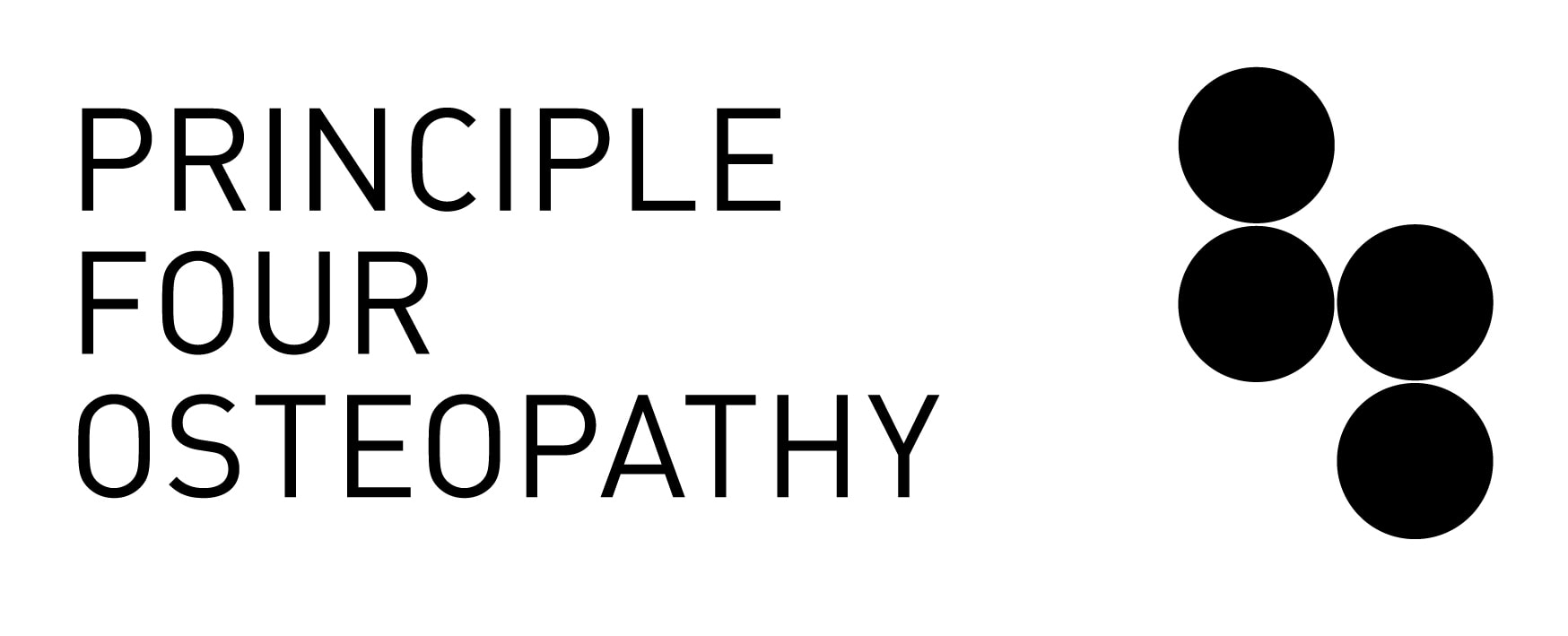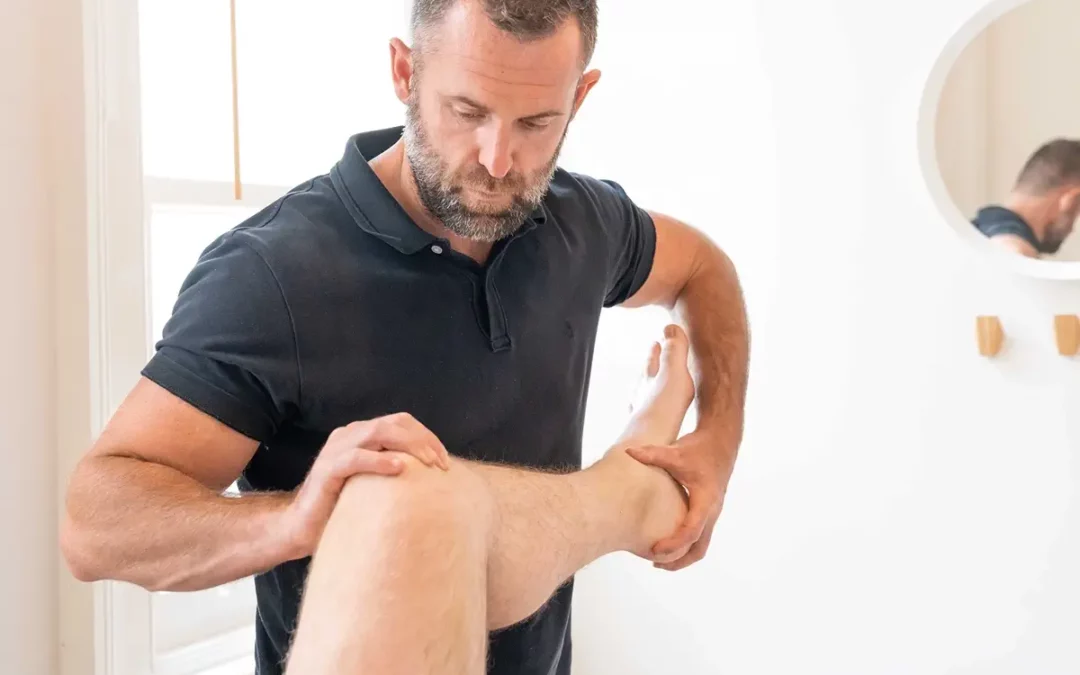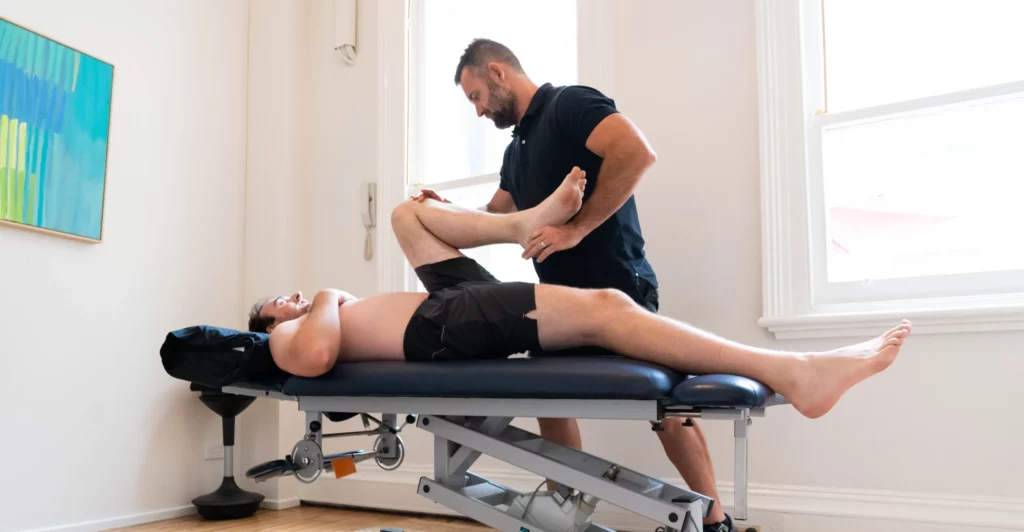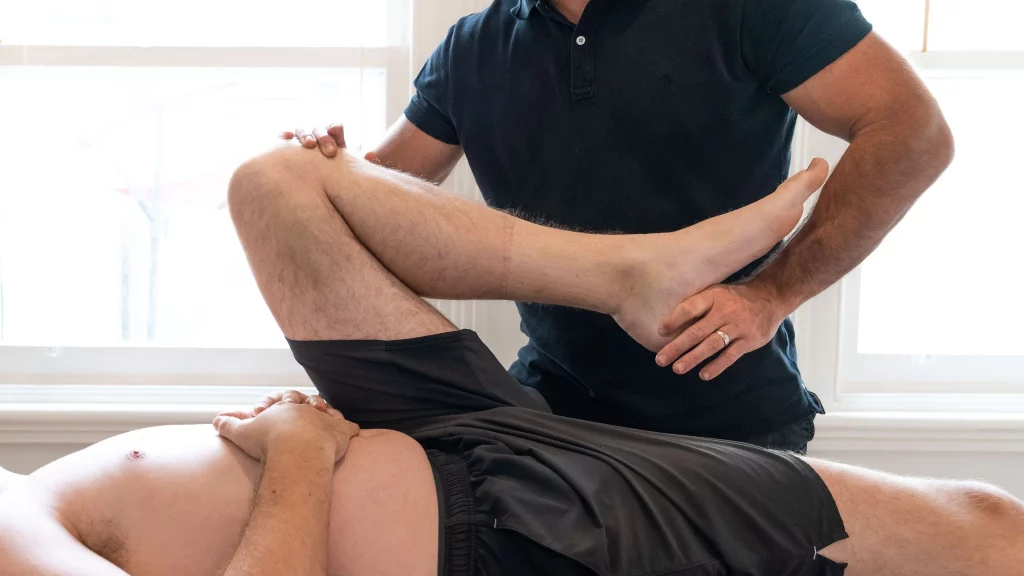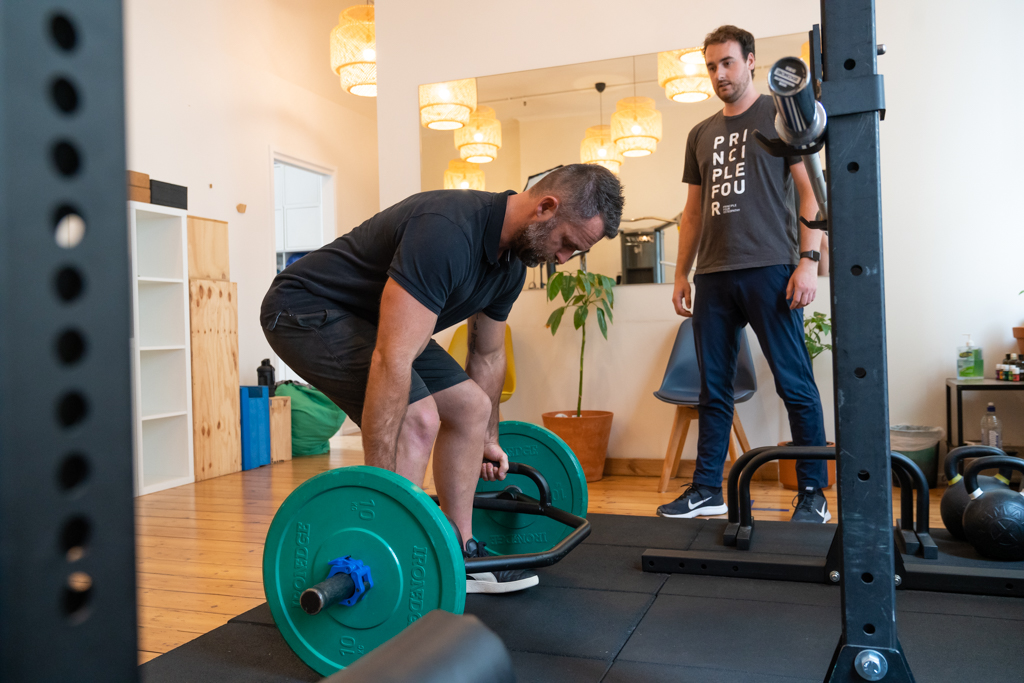Osteopathy for Knee Pain: Relief, Recovery, and Resilience
Table of Contents
- Introduction
- Common Causes of Knee Pain 2.1 Acute vs Chronic Knee Conditions
- How Osteopathy Treats Knee Pain 3.1 Manual Therapy Techniques 3.2 Exercise-Based Rehabilitation 3.3 Strength & Conditioning for Long-Term Results
- Assessing Contributing Factors
- Osteopathy for Active Lifestyles and Office Workers
- Why Choose Principle Four Osteopathy?
- Our Location in Melbourne CBD
- FAQs About Osteopathy for Knee Pain 8.1 Can osteopaths help with meniscus or ligament issues? 8.2 Do I need imaging before seeing an osteopath? 8.3 How soon can I return to exercise? 8.4 Do you work with other health professionals?
- Author
Introduction
Knee pain can affect people at any age and activity level. Whether you’re recovering from a sports injury, dealing with chronic discomfort from arthritis, or feeling pain after long hours at a desk, your knee health is essential to daily mobility and quality of life.
At Principle Four Osteopathy, our Melbourne CBD-based team takes a whole-body approach to treating knee pain. We combine manual therapy, exercise rehabilitation, and strength training to help you move better, with less pain, and more confidence.
Common Causes of Knee Pain
Knee pain can develop suddenly due to trauma or gradually from repetitive strain or poor movement patterns.
2.1 Acute vs Chronic Knee Conditions
- Patellofemoral pain syndrome (runner’s knee)
- Iliotibial band (ITB) syndrome
- Meniscal irritation or tears
- Ligament sprains (ACL, MCL)
- Osteoarthritis or wear-and-tear
- Referred pain from hip or ankle issues
Osteopaths are trained to assess whether your pain is local or part of a bigger functional issue involving the surrounding joints and tissues.
How Osteopathy Treats Knee Pain
3.1 Manual Therapy Techniques
Our hands-on approach may include:
- Joint mobilisation of the knee, hip, and ankle
- Soft tissue techniques for quads, hamstrings, calves, and ITB
- Myofascial release to reduce muscular tension and improve mobility
- Taping for joint support or patella tracking control
Manual therapy helps reduce pain, increase movement, and create a better foundation for rehab.
3.2 Exercise-Based Rehabilitation
Rehab is essential to restoring knee stability and movement control. Your osteopath will guide you through:
- Mobility and range-of-motion drills
- Activation of key stabilisers (e.g., glutes, VMO)
- Balance and proprioception exercises
- Functional re-training (stairs, squats, lunges, running mechanics)
3.3 Strength & Conditioning for Long-Term Results
Building strength is key to preventing recurrence and improving knee resilience. At Principle Four, we apply strength and conditioning principles to your rehab program, helping you:
- Load safely and progressively
- Return to gym or sport with confidence
- Build muscle control and endurance
This performance-focused approach bridges the gap between rehab and real-life activity.
Assessing Contributing Factors
Our osteopaths assess not just the knee but the whole kinetic chain—hip, pelvis, foot, and gait. Many knee issues stem from:
- Poor hip control or glute weakness
- Flat feet or footwear issues
- Ankle stiffness affecting load mechanics
- Imbalances in quads vs hamstrings
We also offer ergonomic advice for those who experience discomfort due to workplace posture or long sitting periods.
Osteopathy for Active Lifestyles and Office Workers
Whether you’re a runner, gym-goer, cyclist, or desk-based professional, knee pain can affect your performance and daily function. At Principle Four Osteopathy, we tailor care to your routine:
- Modify training or work activities
- Support injury recovery and reloading
- Provide a structured plan with clear progression
Why Choose Principle Four Osteopathy?
We provide:
- A clear diagnosis and evidence-based treatment plan
- Integration of manual therapy with rehab and strength work
- Personalised care focused on your goals
- Education so you understand your condition and how to self-manage
Our Melbourne CBD clinic is trusted by athletes, workers, and people seeking to take an active role in their recovery.
Our Location in Melbourne CBD
We’re located at: Level 4, 178 Collins Street, Melbourne VIC 3000
Easily accessible by public transport and right in the heart of the city, we’re ideal for office workers, students, and fitness-minded individuals needing expert care close to work or home.
FAQs About Osteopathy for Knee Pain
Can osteopaths help with meniscus or ligament issues?
Yes. We can assess the severity and provide treatment, and if needed, refer you for imaging or specialist opinion.
Do I need imaging before seeing an osteopath?
Not necessarily. We can often begin treatment without scans. If we suspect structural damage, we’ll guide you through the next steps.
How soon can I return to exercise?
Most people can continue moving in a modified way. We’ll guide you on safe return-to-training protocols.
Do you work with other health professionals?
Yes. We regularly liaise with GPs, physios, podiatrists, and sports medicine specialists to ensure your care is coordinated.
Author
Heath Williams
Principal Osteopath | Strength Coach | Workplace Health Consultant
Heath brings 15+ years of clinical experience helping people recover from knee pain and return to optimal movement. He specialises in evidence-based osteopathic care integrated with strength and rehab principles.
